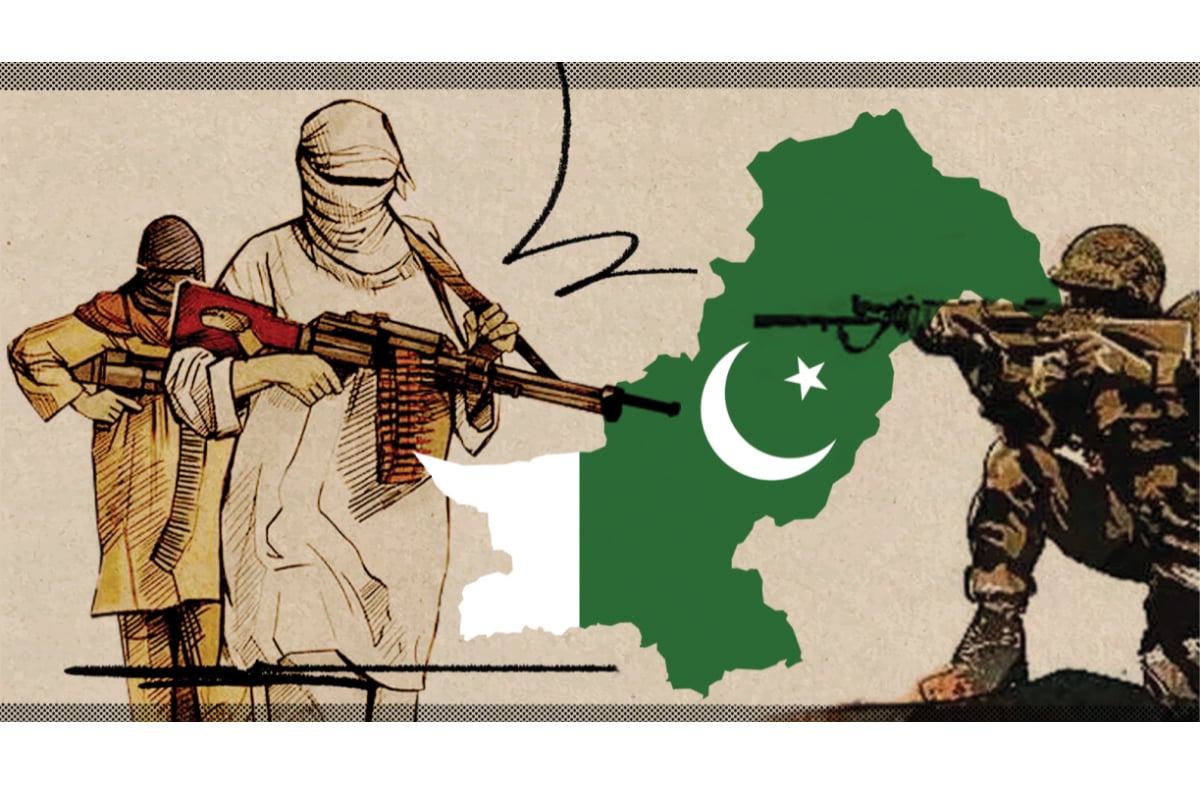
A New War of Terror
Pakistan is increasingly in the line of fire as terrorism raises its head with renewed vigour
Pakistan appears to be in for a new war on terror. Hopes of a peaceful settlement between the Pakistani state and Tehreek-e-Taliban Pakistan (TTP) militants are fading, as both sides have stepped up action against one another in recent days. The militants have increasingly targeted security forces, while the law-enforcement agencies have taken down many suspected terrorists in different parts of the country. The number of terrorist attacks increased in September to 42, the highest in a month in 2022. In a statement issued on October 5, the Taliban accepted the killing of its militants in Karachi, Peshawar and Tank in recent days, and threatened to retaliate.
Despite a ceasefire agreed upon between the Pakistani state and the outlawed Tehreek-e-Taliban Pakistan (TTP), militancy is on the rise in the districts of Khyber Pakhtunkhwa (KP) bordering Afghanistan, where TTP militants are holed up and are operating from. Meanwhile, security forces have intensified their crackdown on suspected militants belonging to different terrorist organisations, including the TTP and Islamic State of Khorasan and Pakistan (ISKP) aka Daesh. In one such deadly attack on October 4, a group of suspected militants fired on a military convoy in the Hasan Khel area of the Lakki Marwat district. In the ensuing gunfight between the two sides, two army soldiers and three attackers lost their lives. In another incident the same day, troops shot dead four suspected militants in an exchange of fire in Tank district, bordering the restive South Waziristan region.
Since the Afghan Taliban took over in Kabul August last year with the departure of US and NATO forces, militancy has spiked in the districts of North Waziristan, South Waziristan, Swat, Buner, Mohmand, Bajaur, Lakki Marwat and Bannu. In these areas, target killing, extortion and explosions have become routine. Although the mainstream media — television stations in particular — has scarcely reported or debated the resurgence of terrorism in KP, local journalists say that a significant number of TTP militants have returned to these areas and are trying to establish their writ through the use of force and terrorising people. On September 5, acting on intelligence reports that the TTP was regrouping in the Bay area of North Waziristan, security forces conducted a raid on the holdout of suspected militants. As a result, a huge exchange of fire between the two sides resulted in the death of five Pakistani soldiers, including a captain, and four suspected terrorists.
The law and order situation in the North Waziristan district has been increasingly alarming for the past several months. Local people have protested against the uptick in terrorist activities and return of TTP militants. A month ago, in August, local people belonging to Utmanzai, Wazir and Dawar tribes in different towns of the district staged protest demonstrations for several weeks consecutively to agitate against the rampant target killings in their areas. The protesters called for an immediate crackdown on militant groups and organisations, who they claimed were responsible for the murders. The locals also closed markets and blocked traffic to press their demands. Earlier, hundreds of local men from Khyber district (Momand), Tirah Valley and Bara Bazar had also held multiple street protests and sit-ins against the uptick in militancy.
In South Waziristan’s Mehsud tribe districts, the Taliban are seen holding arms and patrolling various areas. Locals complain that the Taliban have started to demand extortion money from shopkeepers, traders and businessmen. The Pakistan Tehreek-e-Insaaf (PTI)’s member of the KP Assembly, Malik Liaqat, faced the ire of terrorists for raising his voice against the administration’s indifference and failure to stop terrorism in his home district, Lower Dir. Unknown assailants attacked his vehicle, killing two of his family members and two police guards. In Swat, too, some TTP militants have clashed with the local police. In August, the Swat Qaumi Jirga, a representative group of tribal elders in the region, vowed that they would not allow militants to disrupt peace in the region, which has faced militancy in the name of Islam since 1992.
North Waziristan and South Waziristan were the main bases of militancy of the terrorist organisation, the TTP, until 2014, when Pakistan’s security forces launched operations against the group. Consequently, most TTP militants fled to the border areas of neighbouring Afghanistan, such as Kunar. It seems the gains made against militants during the Zarb-e-Azab military operation in North Waziristan have been lost in recent years as terrorists have been freely conducting target killings of their opponents in the region. So far, militants have murdered 480 people in the region. According to government figures, 63 people had lost their lives in target killings by August 2022, with the Mir Ali area being the worst affected. On the other hand, according to local officials, the security forces killed 105 militants in clashes and arrested 204 suspects during the same period. Also, a kind of war of turf is being waged between ultra Pashtun nationalists led by Manzoor Pashteen, Mohsin Dawar and others and the so-called Islamists. Those having been targeted by TTP militants include young Pashtun nationalist activists such as the Youth of Waziristan leader Waqar Ahmed and one Sunaid affiliated with the National Democratic Movement (NDM). Both were shot dead in June this year.
A perception was created in the Pakistani media that the Indian intelligence (RAW) and Kabul’s intelligence agency (NDS), under the Ashraf Ghani government, were supporting, training and funding the TTP to destabilise Pakistan, and that once the hitherto friendly Afghan Taliban took over in Kabul, the TTP would be deprived of its bases and sponsorship. On the contrary, following the Afghan Taliban’s return to power in Kabul, the TTP ratcheted up its terrorist activities in Pakistan with support from the Kabul establishment. In a briefing to the members of Parliament in 2021, former DG ISI Lt Gen Faiz Hameed reportedly said the Afghan Taliban and TTP were two sides of the same coin. Both have taken the oath of allegiance (baiyat) to the same leader (Amir), Mullah Haibutullah. In February 2022, the UN’s monitoring team said that terrorist groups now “enjoyed greater freedom in Afghanistan than at any time in recent history.” From August 2021 to mid-2022, TTT attacks from across the border martyred above 150 Pakistani soldiers. Responding, Pakistan used drones and warplanes to hit the TTP’s bases inside Afghanistan. The Afghan Taliban, being the TTP’s allies, protested against these raids and advised Pakistan not to test the patience of the Afghan Taliban.
In the Doha agreement with the USA, the Afghan Taliban had pledged that they would not provide any cooperation to the international terrorist organisation in Afghanistan or allow their territory to be used for terrorism against any other country, but they have not kept their word. The Haqqani Network, a faction of the Afghan Taliban, reportedly has extensive ties with militants from South Asia, China and Central Asia, and these elements are freely roaming in Afghanistan. In August, an American drone strike killed Al Qaeda chief Ayman al-Zawahiri in Kabul. Zawahiri was present at a safe house that is allegedly owned by a close colleague of Afghan Interior Minister Sirajuddin Haqqani. The Afghan Taliban denied the presence or killing of Zawahiri, but few among the international community were convinced of the denial.
Instead of curbing the TTP’s activities, the Afghan Taliban and the Haqqanis offered Pakistan and China the facilitation of a dialogue with militant organisations based in Afghanistan. Pakistan welcomed the offer, but China refused and communicated to the Taliban its zero-tolerance policy in respect of terrorism. Early this year, Pakistan initiated an indirect peace process with the TTP facilitated by Afghan Interior Minister Sirajuddin Haqqani. Since then, more than three groups comprising tribal elders and Deobandi ulema have visited Kabul to hold talks with the TTP. A delegation of Pakistani ulema led by a top Deobandi cleric, Mufti Taqi Usmani, met TTP leaders and tried to persuade them to make peace with Pakistan. Most TTP men are students of these ulema from the seminaries in Karachi and Khyber Pakhtunkhwa. Media reports suggest the TTP leadership refused to soften their stance. TTP is adamant about its key demands, including the resettlement of 4,000 of its militants in their homes in KP, the restoration of FATA and Malakand division by ending their merger with the KP, the enforcement of its brand of Islami law (Shariah) in the former tribal districts, and the release of all its workers arrested in heinous crimes. Interestingly, the Deobandi religio-political party, the Jamiat Ulema-e-Islam (JUIF), also endorses the TTP’s demand for ending the merger of FATA with the KP.
Ostensibly, the indirect negotiations between the Pakistani state and TTP did not result in a peace agreement, but both sides agreed to hold an indefinite ceasefire. Circumstantial evidence, however, suggests that some sort of tacit understanding was reached between the two, as a result of which the government freed hundreds of TTP prisoners as a goodwill sign and to create some sort of breathing space for peace talks. A number of TTP militants were also allowed to return to their homes in different districts, which they otherwise could not enter owing to fencing on the Pakistan-Afghanistan border and several checkposts along the way. It seems the understanding was that the TTP workers would not take up arms and live peacefully. However some of them have reneged on their commitments.
Militant groups generally use reconciliation to gain time for their survival, so as to recruit more people, train them and organise their network and use the territory as a launching pad to occupy more space, as Maulana Sufi Mohammad and later Mullah Fazlullah aka Mullah Radio did in Swat; they struck more than one agreement with the authorities but used the opportunity for extending their support base and establishing their writ in the region. Finally, military operations were conducted to bring the territory under the government’s control.
There is reasonable evidence to suggest that the TTP has close ties with AL Qaeda and Daesh (the Islamic State) in Afghanistan, besides other sectarian militants in Pakistan. A few days ago, the Afghan authorities arrested two Daesh (ISKP) commanders from the house of TTP Bajaur Chief Commander, Abdullah Bajaur, in Kunar province, after which his men started leaving the area and headed towards Nooristan province. In 2010, Abu Dujana al-Khorasani, an Al Qaeda-trained militant, had blown himself up inside a CIA base in Khost province, killing several CIA operatives. He carried out this attack to avenge the death of TTP founder Baitullah Mehsud in a US drone strike. Had Pakistan agreed to the TTP’s demand for reversing the inclusion of FATA in KP, the TTP could have formed a state within the state in the former tribal districts. This would have been beneficial for Al Qaeda operatives as well, as they could then have used the territory as their base in the difficult mountainous region.
The TTP’s objective is to establish an autonomous state in the former tribal area of FATA and Malakand, which it can use to spread its version of religion all over Pakistan, gradually bringing other parts of the country into its ambit. The organisation appears to be in no mood to surrender before the country’s security forces and accept the writ of the Pakistan Constitution, which in its view contains un-Islamic content. In these circumstances, the recent visit to Washington by army chief Gen Qamar Bajwa, accompanied by a few other top generals of the army, is meaningful, as the focus could be on cooperation between the USA and Pakistan on countering the rising threat of terrorism. The USA has already approved financial and technical aid for the repair and maintenance of F-16 warplanes on the ground for use in counter-terrorism operations.
Catch all the National Nerve News, Breaking News Event and Latest News Updates on The BOL News
Download The BOL News App to get the Daily News Update & Live News.






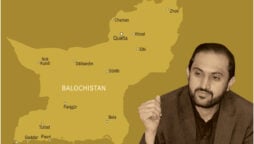
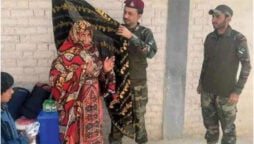
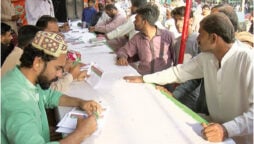
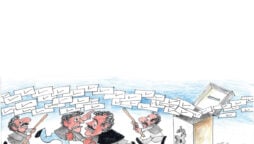


 Read the complete story text.
Read the complete story text. Listen to audio of the story.
Listen to audio of the story.